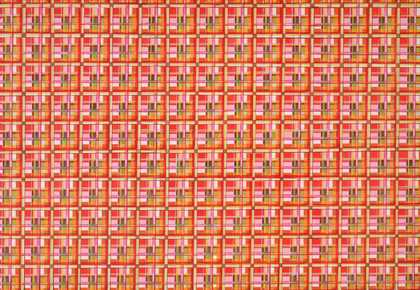Lisa Milroy was born in 1959 and raised in Vancouver, Canada. She moved to London in 1979 to study at St Martin's School of Art and Goldsmiths' College of Art (1979–82). Since graduating, her career as a painter has flourished.
In the riverside gallery space, you are greeted by a selection of 'object' paintings for which Milroy first received recognition in the mid-1980s. The initial impact of these paintings is that of a kind of grand group portraiture in which commonplace objects are brought into the spotlight. Gravura brush marks bestow a certain glamour to even the most mundane objects: the jewel-like twinkle of a keyhole, the sultry sheen of shiny shoes. Each item is lovingly painted to prompt an exploration of the entire canvas. In Tyres 1988, the objects whirl confidently through infinite white space as if fighting for attention whereas in Hardware 1991, the individual elements accept their status within the group and stick firmly to the picture plane.
Milroy animates inanimate objects to convey a heightened presence, both of what we recognise in the image and of the brush marks themselves. She presents generic rather than individual properties of objects which are rendered in a neutral space against a white background. Despite the objective, even abstract patterning of objects across the canvas, subjective readings are unavoidable and cumulative. Stamps 1988 for example combines the smallness of the scenes depicted with the largeness of the canvas itself. The painting points outwards to experiences of place and travel and inwards to the careful selection and engagement of the collector.
Her sense of which things can be classified extends from an appreciation of Greek vases to those random bits and pieces of things that seem to attract each other in the back of drawers. In Small Objects 1987, screw, hair clip and key float across the canvas to form a visual list.
At the heart of Milroy's practice lies a deep appreciation of the world at large and its translation into the varied languages of paint. In this, the most significant exhibition of her work to date, paintings from the past two decades are grouped by theme rather than chronology to enable developments and recurring ideas to resonate. The richness of the paintings increases as the viewer gives time and space to the activity of looking.


